 EN
EN
 PT
PT
Find out where the animals are
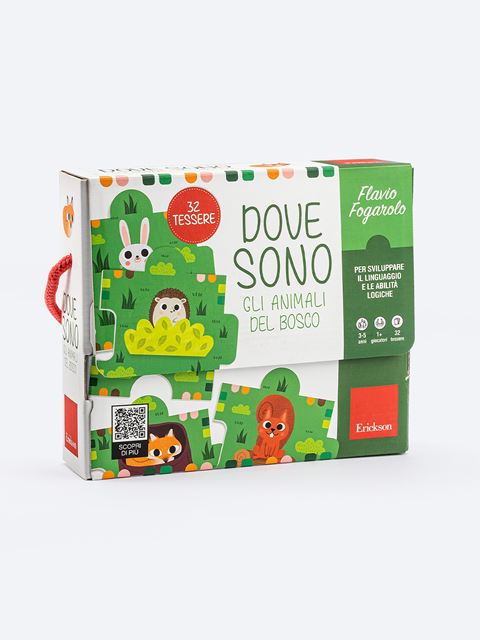
Product: Teaching tools
ISBN: 9788859017066
Publication date: 01/09/2018
Suitable for: Nursery 1st Level (ages 3-4), Nursery 2nd Level (ages 4-5)
REQUEST A SAMPLE OR MORE INFORMATION
A simple, engaging, multi-activity game, which can be easily adapted to a child’s development as it offers activities of increasing difficulty. The 32 large puzzle pieces stimulate children’s dexterity and association and observation skills.
Connect the cards showing four woodland animals (squirrel, fox, hare, hedgehog) which are in a relative position (on, in, behind, under) with respect to four items (outside the tree trunk, inside the tree trunk, bush, leaf) for a total of sixteen possible combinations.

Easy, fun and engaging puzzle games for children ages 3 to 5
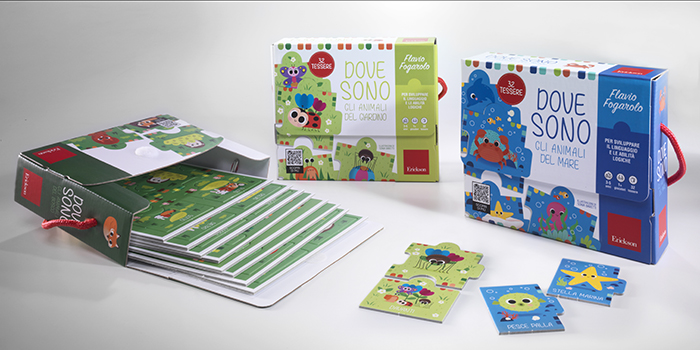
“Where are the sea creatures?”, “Where are the garden animals?” and “Where are the forest animals?” are simple, colourful puzzle games created to stimulate dexterity and association and observation skills in children ages 3 to 5.
The game consists of joining the puzzle pieces together by matching each animal (for example, the crab) to a relative position (in, under, in front of, behind) with respect to four items of spatial reference (shell, dolphin, rock, seaweed), allowing the questions "Who is it?" and "Where is it?" to be answered.
A colour code system found on the edges of the cards allows the child to autonomously check if he/she has made a correct match, promoting the mechanism of self-correction.
In addition to the interlocking puzzle game, the "Where are the animals ..." cards also allow additional game alternatives, making them suitable for different ages and stages of child development.
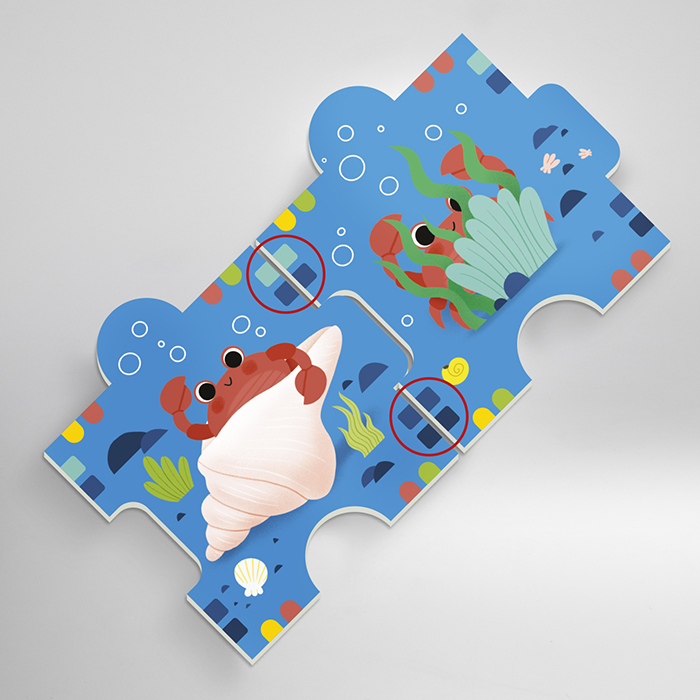
How to play
The game is composed of square centre cards and rectangular beginning/end cards.
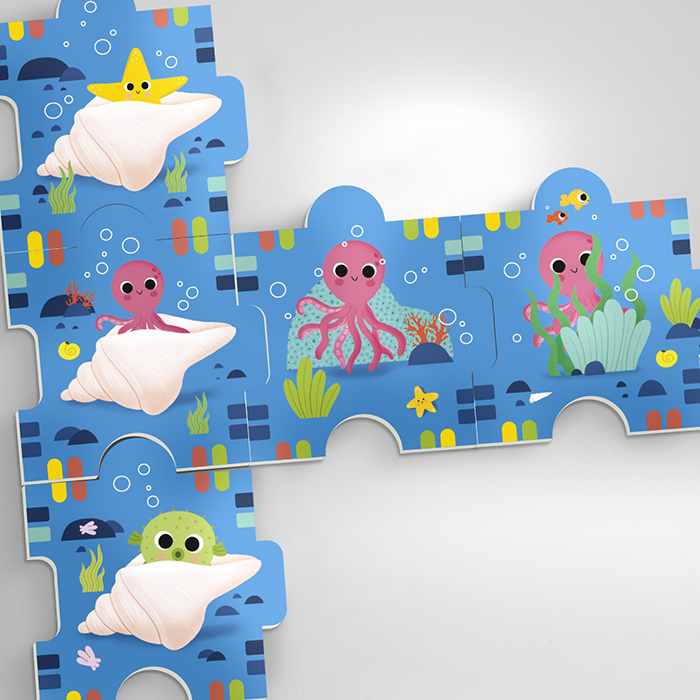
The square centre cards can be attached to other cards both horizontally and vertically, based on their characteristics.
To the left or right side of the card, you can join the same animal in different places (eg. the octopus in the shell joins with the octopus in front of the rock and the octopus in the seaweed).
Instead, on the top and bottom of the card you can join the animals that are with the same object (eg. the octopus in the shell joins with the starfish inside the shell and the fish inside the shell).
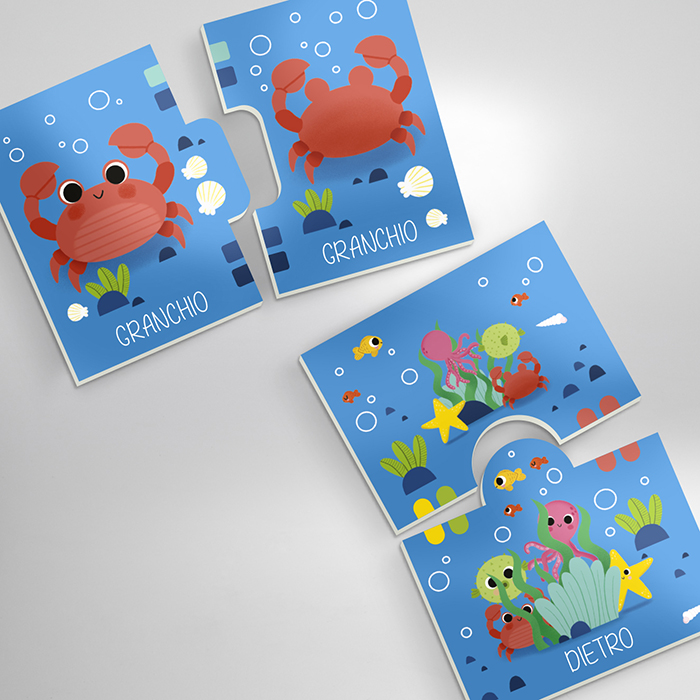
The rectangular beginning/end cards have only one side where they can be attached, and they introduce the idea of the beginning and end of a sequence through the animals and their positions.
Some of these cards show a front view or the animal, others the back view.
The picture shows the beginning and end cards for the crab sequence, and the beginning and end cards for the position sequence behind the seaweed.
There are multiple activities proposed which can be chosen based on the age and interests of the child. The games can be differentiated by using all the cards in the box or by selecting only some of them. Moreover, you can choose to use only the square centre cards, only the rectangular beginning/end cards, or both the centre and beginning/end cards.
Here are all of the games in the series “Where are the animals”:
Where are the sea creatures?
Connect the cards showing four sea animals (crab, puffer fish, starfish, octopus) which are in a relative position (in, under, in front of, behind) with respect to four items (shell, dolphin, rock, seaweed), for a total of sixteen possible combinations.
Where are the garden animals?
Connect the cards showing four garden animals (butterfly, snail, ladybug, spider) which are in a relative position (behind, in front of, under, on) with respect to four items (grass, flowers, arch, ball), for a total of sixteen possible combinations.